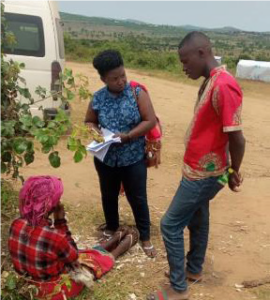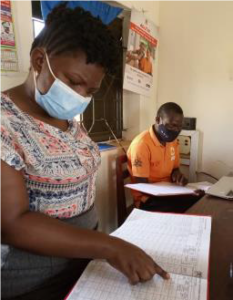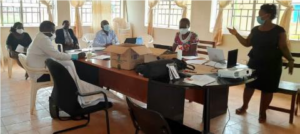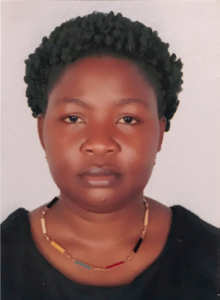 |
Josephine NamayanjaBVM, MVPM Host Site: National Animal Disease Diagnostics and Epidemiology Centre, Entebbe UgandaHost Mentor: Dr. Deo Ndumu Birungi and
|
|||||
ABOUT THE FELLOWI hold a Bachelor of Veterinary Medicine and Master of Veterinary Preventive Medicine of Makerere University, Kampala. During my two years of the fellowship, I have gained skills in scientific writing, leadership, communication, reporting of public health events, and analysis of public health surveillance data using computer software including Excel, Epi-info, & STATA. In addition, I gained competencies in the first steps of transforming data into policy by preparing policy briefs. I prepared several articles for the Uganda National Institute of Public Health (UNIPH) quarterly epidemiological bulletin, technical reports, newspaper articles, and manuscripts. I have gained experience in conducting trainings, conducting epidemiological investigations, and quality improvement projects. I have also gained skills in extracting, cleaning, and analyzing secondary data. Before joining the fellowship, I worked as a Veterinary Inspector at Entebbe International Airport for the Ministry of Agriculture Animal Industry and Fisheries in the Department of Animal Health. My role was to ensure that all live animals and animal products were free from diseases before they are allowed into or out of the country. Because of my interest in Epidemiology, I was given special assignment to manage data at the National Animal Diseases Diagnostics and Epidemiology Centre (NADDEC). It is from there that I was identified to participate in an International Training Programme (ITP) in animal health, food safety and antimicrobial resistance in the animal food value chain: “Healthy livestock – Safe food” which took place in Uppsala and Jönköping, Sweden in May to November, 2019. The training was organized by the Swedish National Food Agency (SLV), the Swedish National Veterinary Institute (SVA), the Swedish Board of Agriculture (SJV) and the Swedish University of Agricultural Sciences (SLU) on behalf of the Swedish International Development Agency (Sida). Through this training, I acquired knowledge on disease surveillance, crisis management of zoonotic diseases, control of foodborne zoonoses, and prevention of antimicrobial resistance in the animal food chain. I also completed a graduate fellowship in infectious Disease Management supported by USAID and Minnesota University – implemented by Makerere University School of Public Health and College of Veterinary Medicine, Animal Resources and Biosecurity. During the fellowship, I was attached to the Division of Veterinary Public Health, Ministry of Health where I participated in a number of activities. These included Yellow Fever outbreak investigations in Rukungiri, training of VHTs in Community-Based Disease Surveillance (CBDS) in Adjumani and Masaka Districts, and training of District Health Teams in Integrated Disease Surveillance and Response (IDSR) in Gomba District. I also led a team of Health educators to mobilize communities for Yellow Fever Mass Vaccination in Kalangala District. Achievements at the Host Site
Fellowship program specific achievements
Other activities involved in:
Conference Presentations
Publications and manuscripts written Manuscripts:
Newspaper articles:
Bulletin articles
Summary of Epidemiological Study:Title: Investigation of a COVID-19 Cluster in Achwa Hydroelectric Power Plant, Pader District,Uganda- October 2020 Background: Achwa Hydroelectric Power Plant (AHPP) in Pader District, Uganda introduced multiple measures starting in April 2020 to reduce risk of COVID-19 introduction and spread. These included testing of visitors/returnees to AHPP for COVID-19 on arrival, enforcement of regular hand washing, face mask use and, maintaining ≥2 metres distance from others. Despite these measures, on October 3, 2020, a COVID-19 cluster was reported at AHPP. We investigated to identify factors facilitating spread and recommend control measures. Methods: A confirmed case was a positive RT-PCR for SARS-CoV-2 in a person who lived, worked at, or visited AHPP from August-October 2020. We reviewed routine COVID-19 test results from the medical records of AHPP to find cases and develop the line list. We performed environmental assessments and conducted a retrospective cohort study among AHPP employees. Results: Among 525 employees in six residential camps at AHPP, we identified 105 case-persons (overall attack rate (AR)=20%); mean age was 32 years (range, 18-60 years). The index case-person delivered supplies to AHPP from Kampala on August 10, 2020, interacted directly with two employees, and left immediately; his positive result returned on August 17. The second case-person was an employee who travelled to Gulu City from August 5-8; his sample was collected on August 15 and tested positive on August 25. Alnour camp was both the most congested, with all workers sharing a single dining area, and the most affected (AR=61%) camp. Risk was higher among persons sleeping >2 per room (~20×20 feet in size) than those who slept ≤2 per room (adjusted relative risk=1.2, 95%CI=1.1-1.5). Conclusion: Crowded employee living conditions facilitated the spread of COVID-19 at AHPP. Long test turnaround time also likely enabled spread of COVID-19 at AHPP. We recommended decongesting sleeping areas at the station and continued surveillance for early detection and management of infections. Key lessons learnt during the fellowship
|
||||||
|
|
|

|
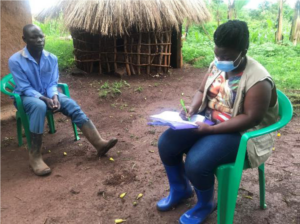
|
|
|

